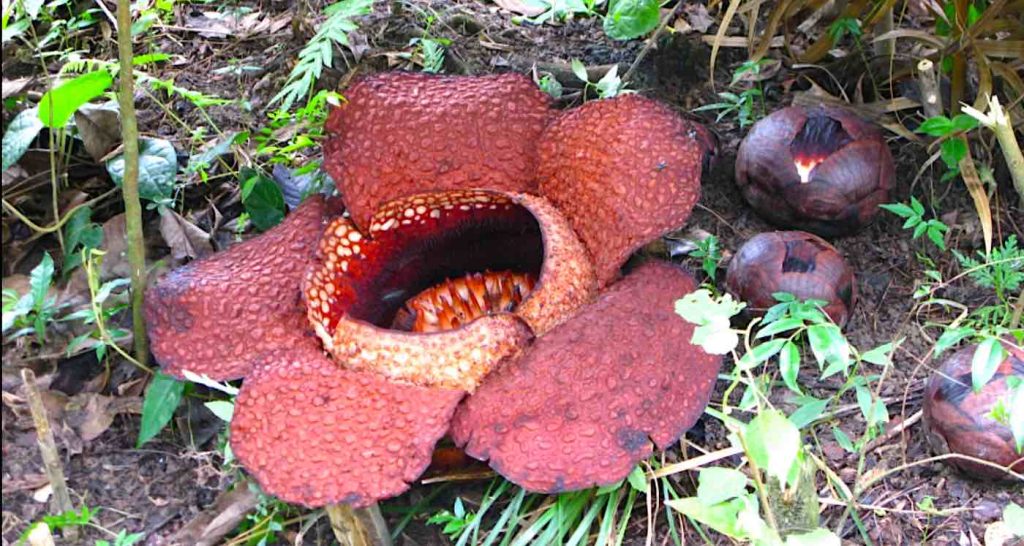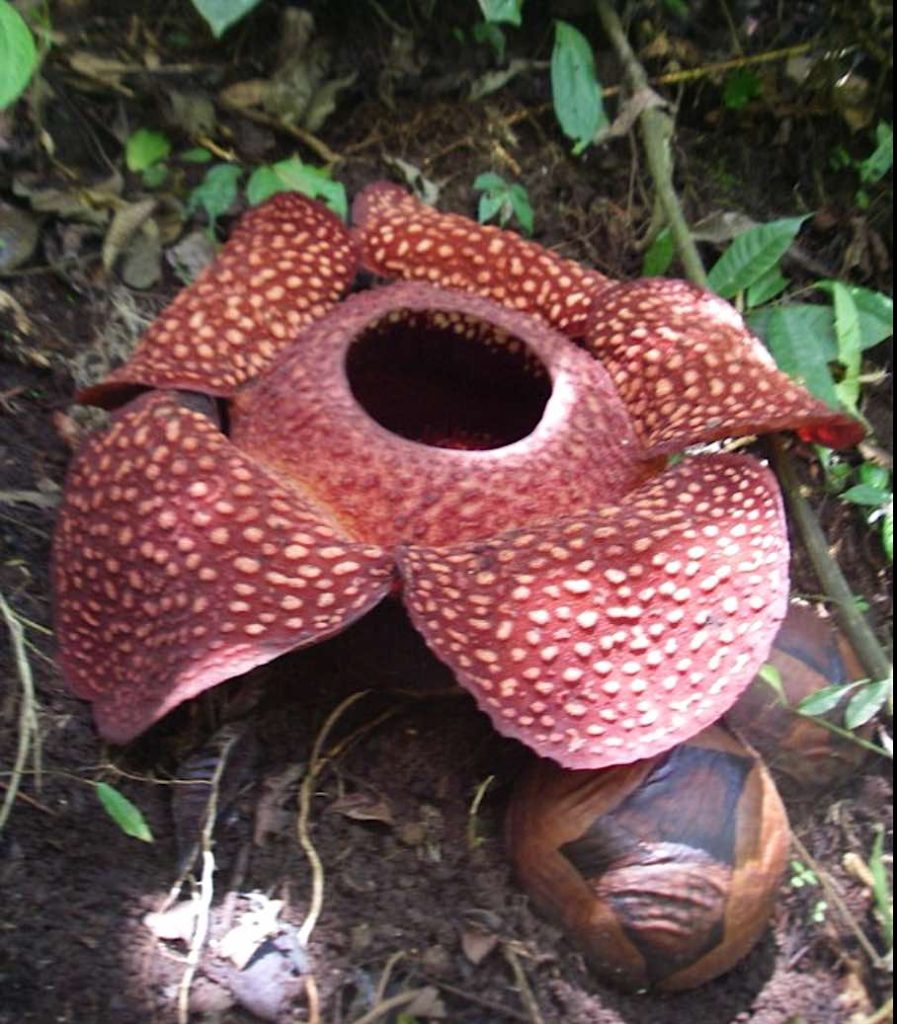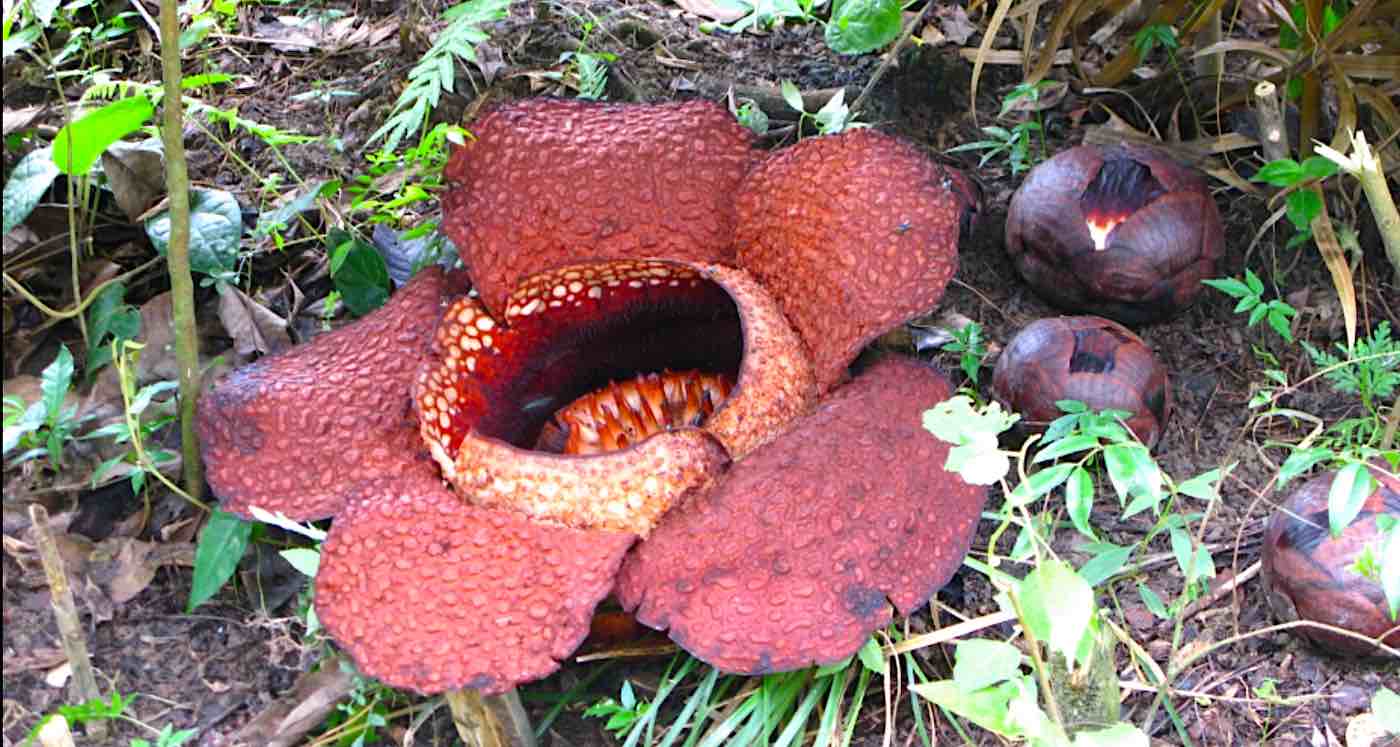
What scientist wouldn’t be drawn to try and save the world’s largest flower, especially when it, Rafflesia, is their country’s national flower?
However when you add in the fact that the world’s largest flower is also the world’s foulest, and that its life cycle is unlike any other plant species on Earth, then suddenly the “panda of the plant world” begins to look more like a headache than the remarkable organism it is.
Sofi Mursidawati, a Ph.D. in agriculture at the Bogor Botanical Gardens on the island of Java, is one of the world’s foremost experts on this strange flower, and her efforts to build a body of knowledge that will allow for the cultivation of the ‘corpse flower’ into the future could save it from extinction.
Rafflesia, also known as the corpse flower, or the giant padma, is a parasitic specimen that has no leaves, roots, or stems, but rather only one giant, one meter-long, 20-pound bloom that smells like rotting meat. Found only in the rainforests of Sumatra and Borneo, its artificial cultivation in the face of habitat loss is problematic, because for more than 70 years of attempts, no botanist has ever successfully created a Rafflesia nursery.
With seeds the size of sawdust grains, pollinated flowers infect a genus of vines called Tetrastygma, before slowly growing over many months into an enormous cabbage-sized bulb. The curiosities don’t end there. In fact, it barely qualifies as a plant.
It branched away from having genetics that code for photosynthesis millions of years ago, and relies entirely upon its host for energy. Furthermore, and unlike most flowers that have pollinating and pollination equipment, Rafflesia blooms are sexually monomorphic, which means that even after taking a year to grow a flower once it’s time to reproduce, it can only succeed if there is another flower of the opposite sex within the same territory of the carrion flies attracted to the scent of rot from its nectar.
RELATED: Huge Field is Planted With More Than 100,000 Sunflowers to Read the Word ‘Hope’ – LOOK
Just as it’s difficult to get pandas to breed, Rafflesia are a pain in the neck, as the blooms last only a week, giving precious little time for coordination.
Tender patient hands

“I don’t think there was anybody who was willing to work with Rafflesia because of the difficulties,” Mursidawati, who started a nursery for Rafflesia patma in 2004, told National Geographic. “Everybody also told me that it was impossible.”
After collecting Rafflesia seeds, and a variety of Tetrastygma vines, both cuttings and whole plants from the mountains of Pangandaran Nature Reserve, in West Java, it took her four years to welcome the first stinking flower into the Bogo Botanical Gardens.
A decade later and the work was still slow going. In fact, Manchester United F.C. won as many trophies over the same period as Mursidawati managed to raise flowers from bud to bloom. The bud mortality rate is around 90%, and so many don’t make it to adulthood.
MORE: A Floating Flower Garden in Tokyo Immerses Visitors With Orchids That Move as You Approach (WATCH)
However the cultivation is doing one thing very well: creating specimens to send to botanic gardens around the world, creating what will likely be the strange flower’s greatest chance for survival—in the form of interest in Indonesian eco-travel.
“It doesn’t really matter where it grows, as long as it promotes conservation of that organism,” Jeanmaire Molina, a biologist at Long Island University who studied Rafflesia told National Geographic.
Nat Geo was also detailing how anywhere conservationists finds Rafflesia, they are beginning to immediately campaign for local and federal protection, due to a growing understanding of the unique, if stinky, blessing the rainforests of Malaysia, and of the Indonesian islands, have in the form of the world’s largest flower.
SHARE This Hopeful Conservation News With Flower-Loving Friends…




















